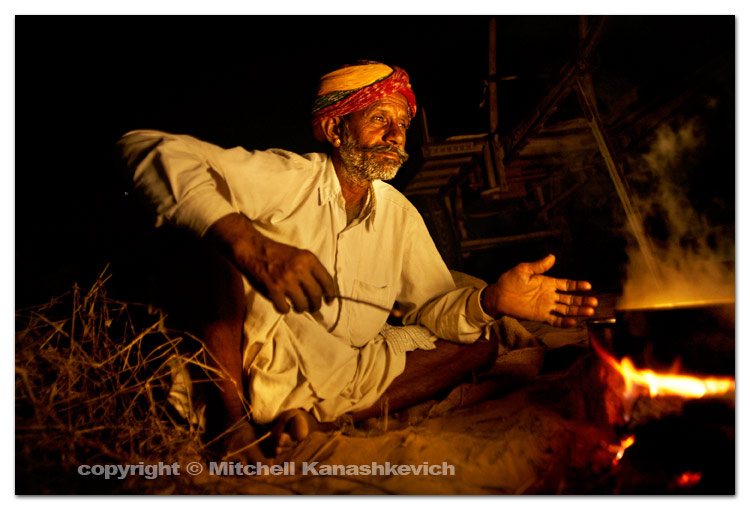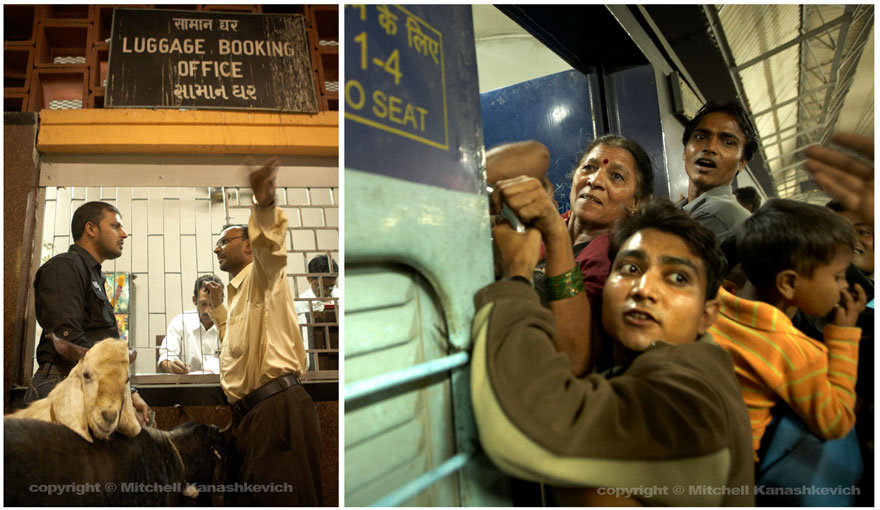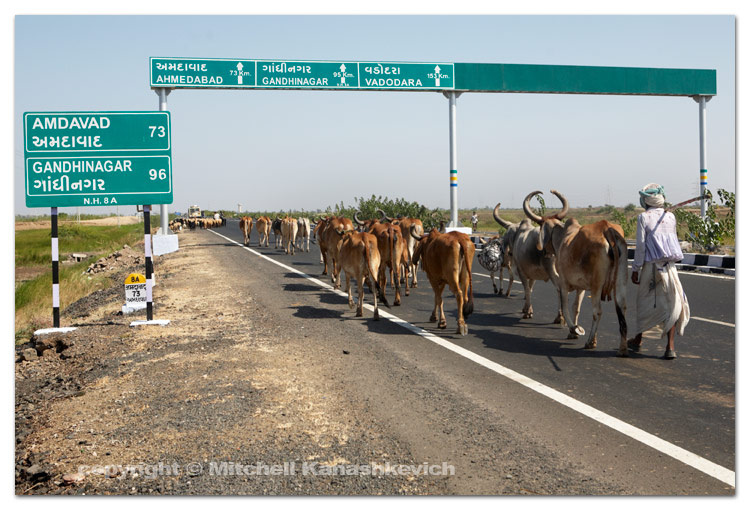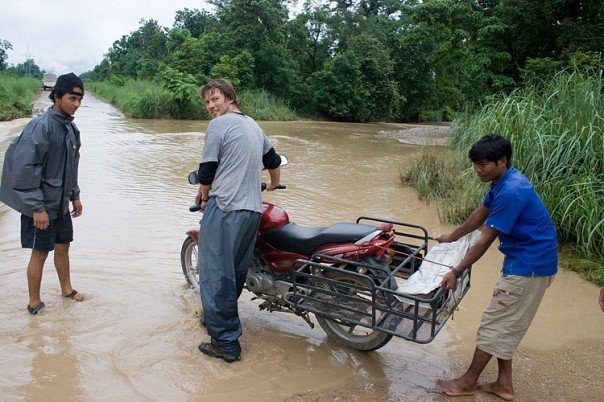I’ve been waiting for something eventful to happen before posting, but events often happen in bunches and really quickly. Having to travel for almost 1000 km over the last five days, time is the luxury which I do not have. I’ll have to be relatively brief.
At this stage, almost three weeks into my journey I feel that I have already experienced the full range of the emotions that India evokes. Yes, the people here are absolutely amazing, but it is also incredible that I can still get so frustrated. A few times I have already had to break the rule of not riding the motorcycle after dark. I’ve done it out of necessity not by choice and I will say it again – DO NOT RIDE AFTER DARK IN INDIA, particularly not in Rajasthan. The truck and bus drivers are maniacs and they can kill you, given enough attempts. How? By blinding you with the high beam and taking up your lane as they overtake something slow-moving in the opposite direction to you – e.g. camel cart. I’ve reached the boiling point a few times already.
My motorcycle luggage carrier drama is now hopefully over. I “pimped my ride” in an area of Ahmedabad, Gujarat where young lads with too much money modify their Indian-made-bikes to look like foreign models. I wanted no such thing. My desire was to simply strengthen my motorcycle frame to withstand the rigors of bearing the weight of my luggage on rural Indian roads. A frustrating, but overall productive experience. I got what I wanted, albeit almost a day later than promised, with just enough time to book my vehicle as luggage on the Indian Railways. The experience of sending your motorcycle somewhere on the train surely takes at least a few days off your life. Finding where to go, who to talk to, how much to really pay and doing it all before the train departs – it’s really not that fun. The bike and we went from Ahmedabad to Jodhpur, on the train, from there we rode to Bikaner, then to Bundi with a one-night stop in Pushkar. Bundi is the final destination for now. From here I will lead a private photography workshop for 17 days.
I have not spent enough time anywhere yet to really absorb the places I’ve been to. One pleasant surprise on the way was the Kolayat fair – dubbed “Mini Pushkar” (the famous camel fair). Here we met two old cameleers with whom we will likely go out into the desert, just for a short journey for the workshop, around some unspoilt traditional villages. Going with them seems like a much better alternative to hiring a jeep and a driver from a Tour Company which I spoke to. I hate being the tourist who is taken around like a spectator in a zoo and then gets milked for every last penny. The tour operator promised me villages which are not ‘touristy’. A ‘touristy’ village in the desert Rajasthan usually means being followed by villagers who ask for rupees, chocolates, pens, soap, shampoo and whatever other things previous tourists were ‘kind’ enough to leave. ‘Not touristy’ means that previous visitors and operators have basically not screwed the place up. I asked whether the company’s driver knew of such villages – Yes, he has taken many tourists there! Replied the company owner. “Hmm, yeah, what you say really makes sense. A good reason to pass.” I thought to myself.
On the other hand the old cameleers instantly made me feel comfortable around them. Perhaps it was the smell of camel dung, unwashed clothes, bidi smoke and their calm voices - characteristics typical of cattle and camel herders around the region. I had become very familiar with such people in my last India trip and have nothing but positive associations with them – real, unpretentious folk who often seem to belong to a world that is different than that of their neighbors.
I’m off to organize the final details of the workshop. I will be quite intensely involved with it over the next 17 days or so and don’t know how often I’ll be able to post. I’ll try my best. Posting some photos here, just some diary shots from the past week. (The image at the top is a camel herder preparing dinner after dark at the Kolayat fair. I wanted to see how people would react to me using an off camera flash in a soft box, whether it would draw too much attention, thankfully not.)




 The ride to Ahmedabad was a reminder why I love this life on the road. Just me and my wife Tanya, riding through what are often beautiful, unfamiliar lands, experiencing everything together – this has been a large part of our lives over the last three years. In many ways it is as romantic as some may think, but there is another side, one which is not so nice.The beauty you see is sometimes matched by the horror (to me at least) - the amount of killed dogs on the roads is impossible to count, the scenery is not always ideal - ugly buildings and industrial, smoke belching areas really do not make for inspirational riding. And then there are the road users, who, well let’s just say they do not always act as one might expect, nor do the pedestrians – I’ve had much more close calls than I would have liked to, over the years. To top everything off there is the ‘pain in the butt factor’ (literally) – over a long journey a motorcycle seat becomes the least comfortable place in the world and even a roach-infested hotel starts to seem like a welcoming alternative.
Riding around India is not easy, but it is far from impossible and not as insane as many visitors to India may think. All that one needs is the knowledge of how the Indian roads work, once things begin to make sense everything starts to feel much less daunting.
The ride to Ahmedabad was a reminder why I love this life on the road. Just me and my wife Tanya, riding through what are often beautiful, unfamiliar lands, experiencing everything together – this has been a large part of our lives over the last three years. In many ways it is as romantic as some may think, but there is another side, one which is not so nice.The beauty you see is sometimes matched by the horror (to me at least) - the amount of killed dogs on the roads is impossible to count, the scenery is not always ideal - ugly buildings and industrial, smoke belching areas really do not make for inspirational riding. And then there are the road users, who, well let’s just say they do not always act as one might expect, nor do the pedestrians – I’ve had much more close calls than I would have liked to, over the years. To top everything off there is the ‘pain in the butt factor’ (literally) – over a long journey a motorcycle seat becomes the least comfortable place in the world and even a roach-infested hotel starts to seem like a welcoming alternative.
Riding around India is not easy, but it is far from impossible and not as insane as many visitors to India may think. All that one needs is the knowledge of how the Indian roads work, once things begin to make sense everything starts to feel much less daunting.